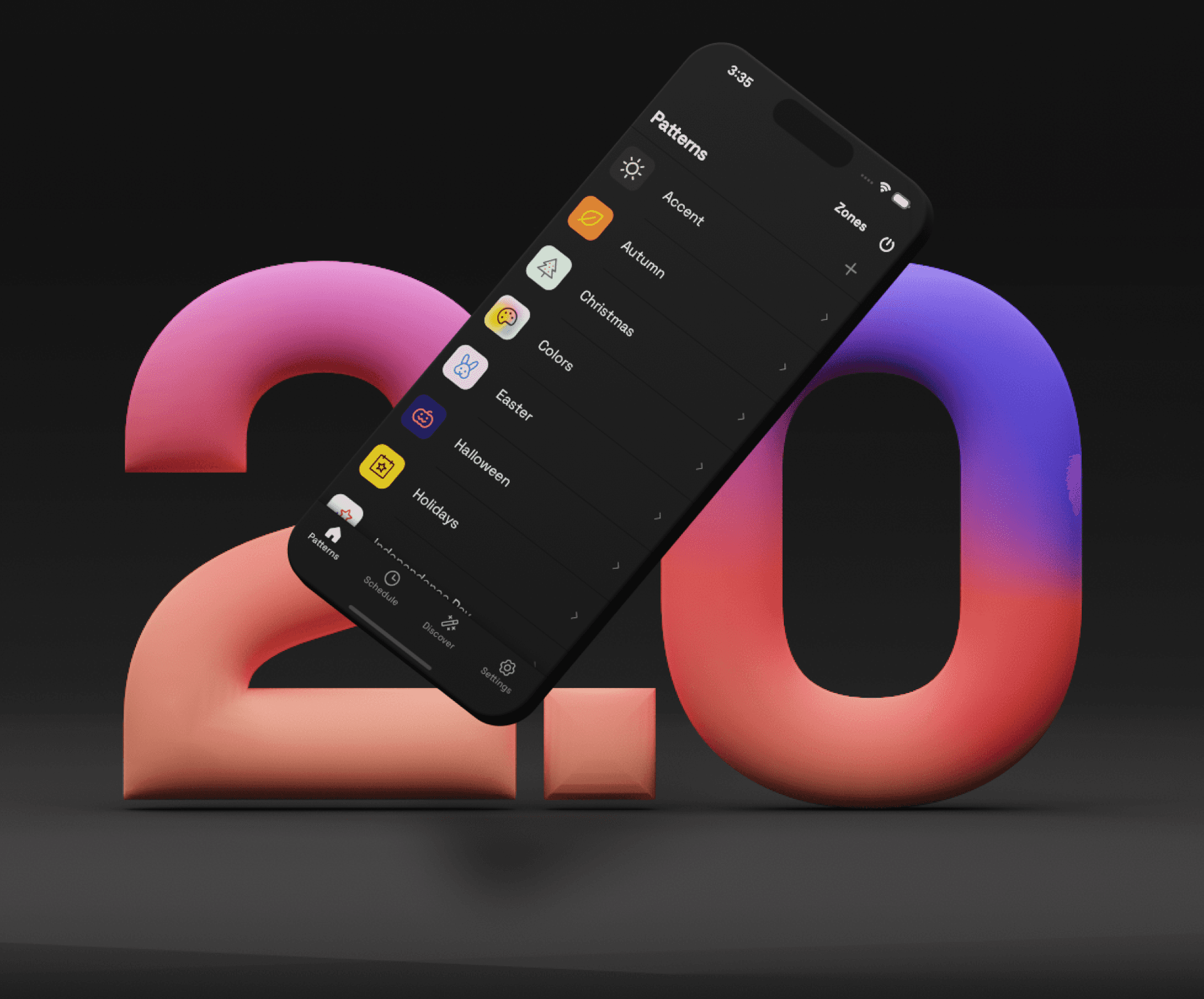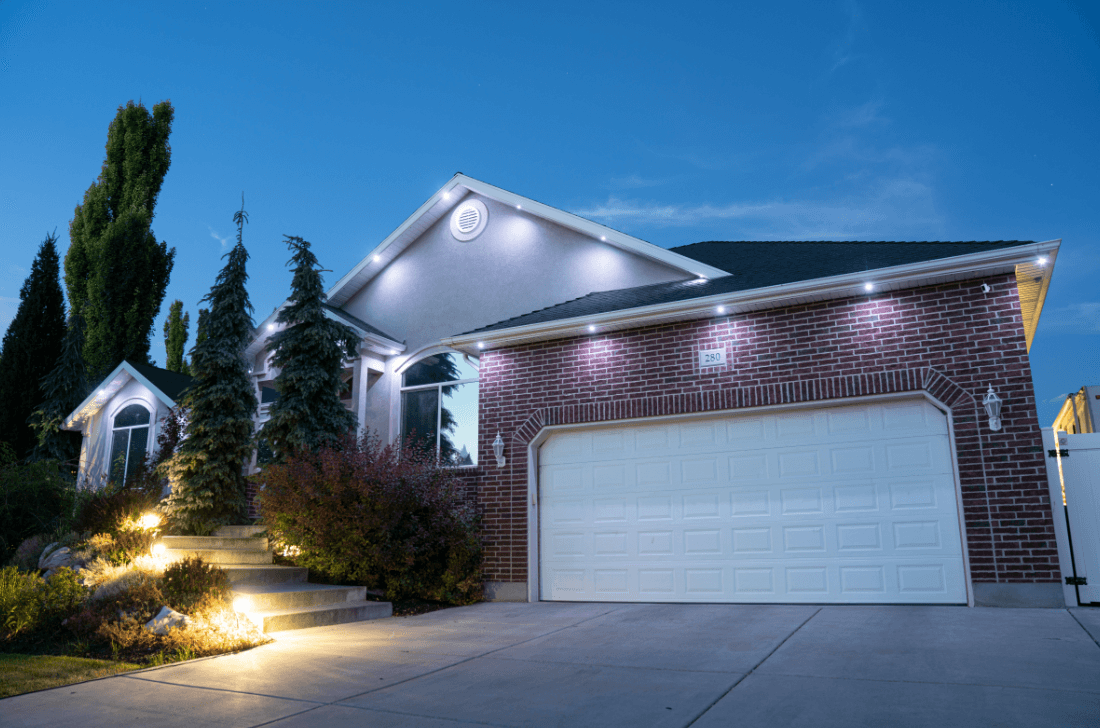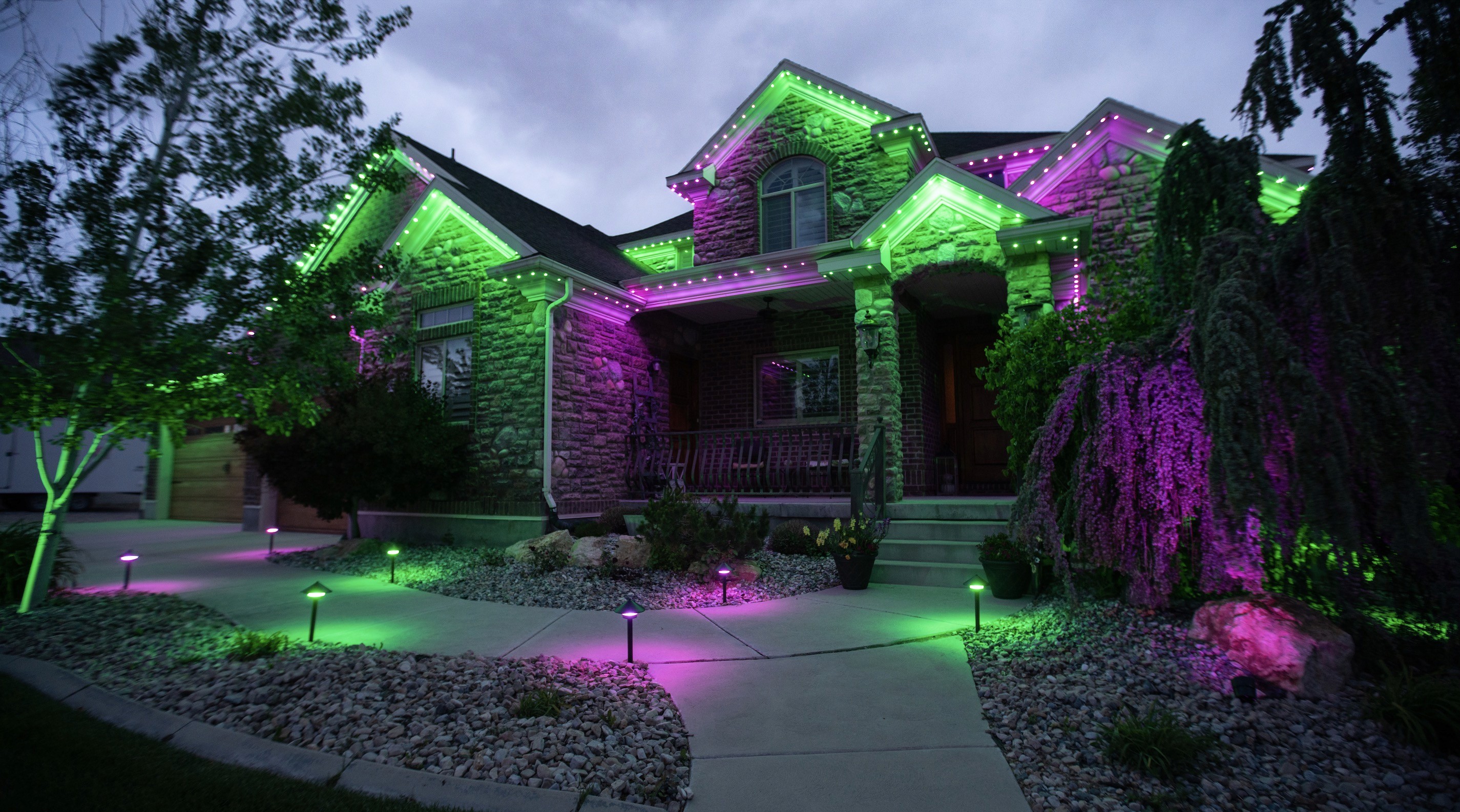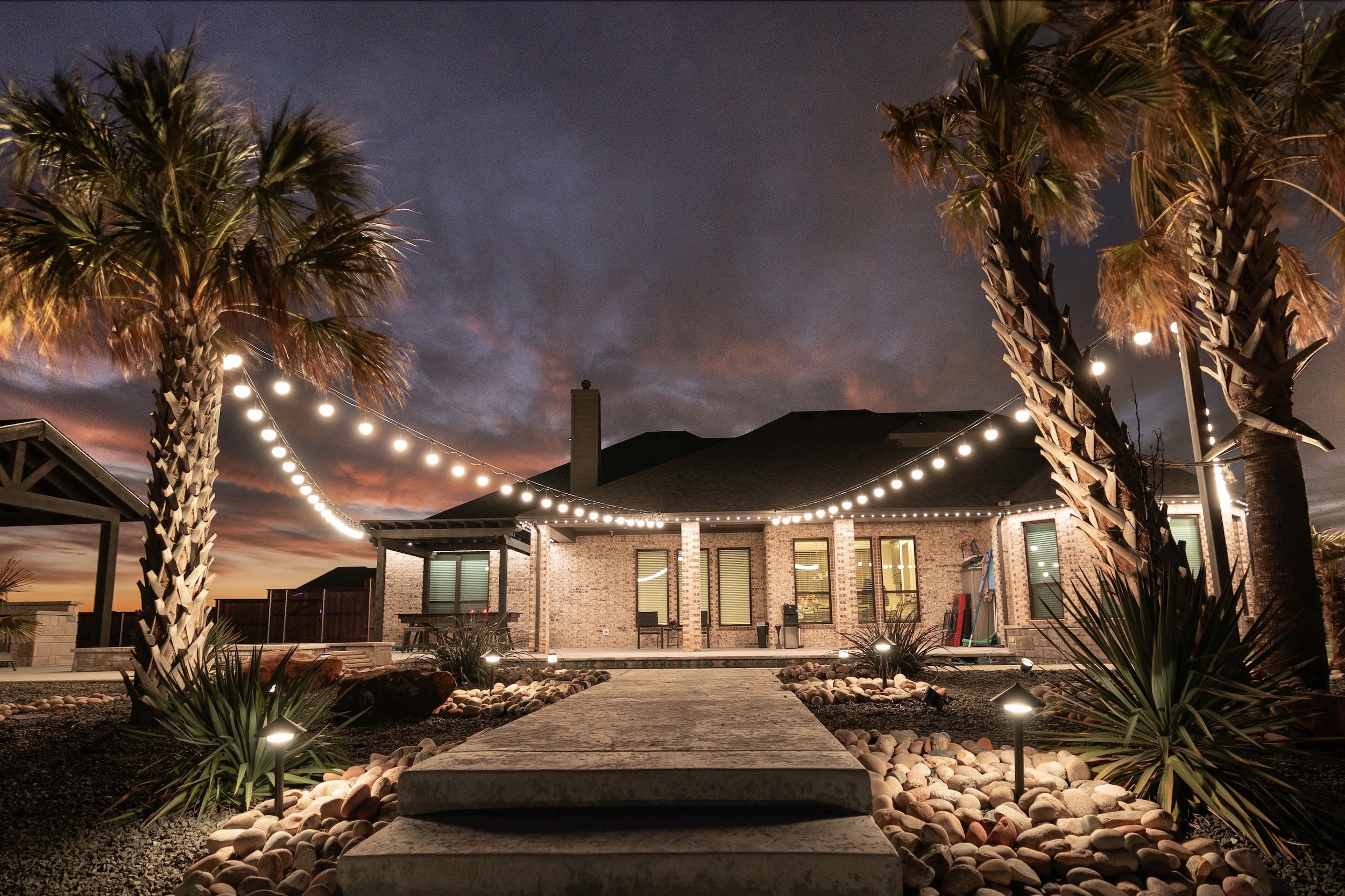Blog
All About LED Recessed Lighting
All About LED Recessed Lighting
All About LED Recessed Lighting

Recessed lights are easy to spot if you only look up and see those holes in the ceiling with a lightbulb in their inner cavities. You can spot LED recessed lighting in art galleries, restaurants, retail stores, pavilions, offices, and most homes, which speaks a lot about their versatility.
What Are Recessed Lights?
Recessed lighting refers to the fixture where the bulb is flush in the metal housing, which is then embedded in any surface. While people think they could only install canned lights on the ceiling, that's not totally accurate. You can also fix them to the wall, floor, or even the ground in the yard.
The recessed lighting fixture instantly transforms your living room, bedroom, kitchen, or even the home's exterior into a sleek and modern space.
You should also note that recessed lighting will add value to your home. So, keep that in mind if you think about selling down the road.
What Are the Three Components of These Types of Lights?
The three components of traditional recessed lighting are the trim, bulb, and housing.
Aside from holding the electrical wiring, the housing is the primary protective structure that shields the bulb. The trim refers to the molding that blankets the light's opening, while the bulb is self-explanatory.
It might seem simple, but each component needs to work perfectly together to prevent future glitches.
When Should I Use Recessed Lights in My Home?
Generally, you can use recessed light to upgrade the interior and exterior look without spending a fortune on home decor.
For instance, you can install recessed light fixtures if your home has a low ceiling since you can avoid unnecessary obstructions from your roof. For example, the lighting fixture is perfect for an attic, basement, or other small rooms.
This decorative lighting is also ideal since it can ride the bandwagon of tiny homes in high demand nowadays.
For instance, you can install a wall light to highlight a section of your room. Meanwhile, step lights and post lights will ensure adequate illumination to the garden, porch, gazebo, playground, or outdoor living space.
You can install task lighting for your kitchen to direct the beam to your countertop. This simple tactic guarantees you have adequate light to see what you are doing.
How Do Recessed Lights Compare to Flush Mounted Lights?
The debate on recessed vs ceiling lights continues to this day since each option has its respective pros and cons.
For instance, LED recessed lights will immediately upgrade the look of any room compared to surface mount lights.
The LED downlight directs the beam on a narrow field, while the flush mount distributes light more expansively. As a result, directional lighting will create texture and character in a room. In contrast, a ceiling light will generally paint the entire area with a monochromic luminosity.
However, you will use only one or two ceiling lights to illuminate the room instead of multiple recessed lighting fixtures to achieve the same brightness.
The primary benefit of the recessed lighting trim is its use of the LED bulb as the primary light source. But the downside is the upfront cost can be expensive, especially if you upgrade your entire system to recessed lighting.
Can I Install Recessed Lights Myself?
Even without experience, you can install recessed lighting on your own. YouTube has countless tutorial videos you can follow step-by-step.
If you already have a ceiling light, you can easily purchase LED retrofit kits to upgrade your lighting system into a more energy-efficient technology. You can screw the kits into the existing bulb socket without necessarily overhauling your electrical system.
What should I Know or Consider Before Installing?
Before DIYing your recessed lighting project, you need to know a few things.
For instance, if you plan on recessed lights near the ceiling fan, be aware of the minimum distance between the blade and the light source. You need to have more than three feet gap to avoid interference. As a result, the fan blade will produce shadows every time you switch it on.
When choosing a recessed lighting fixture, you have to consider the color temperature you want to achieve.
The color temperature can be:
Warm White — The lumens range from 2700 to 3300 Kelvin degrees. The brightness mimics the traditional ICL bulb or halogen bulb.
Cool White — The lumens range from 3300 to 5300 Kelvin degrees, which creates a neutral light.
Daylight — The lumens range from 5300 to 6500 Kelvin degrees. You want to avoid that type of brightness if you don't want your home to appear like a or a commercial establishment.
The interval between recessed lighting fixtures depends on the trim size. For example, a four-inch fixture will need four feet of space.
While you can buy LED retrofit kits, the best time to install recessed lighting works is when the ceiling construction remains unfinished.
Track lighting spotlights the wall decor, painting, sculptor, or other showpieces you have in your home.
Finally, use recessed lighting sparingly and strategically. You want to create accents and texture rather than wash the entire room with monochrome brightness.
What Kind of Trim Should I Use?
Recessed lights feature different types of trims that apply to any situation. Therefore, it's tough to recommend a solution without first determining your specific problem.
However, it would help to understand the different designs to know what type of trim is ideal for your needs.
New construction canned lighting trim — As you might expect from the name, you must install the fixture before constructing the ceiling panels. New construction LED downlights are also useful when adding another room to your house.
Insulation Contact trim — You must pick insulation contact-rated LED recessed lighting. Essentially, the fixture is safe to touch a non-insulated ceiling directly without any danger of combusting. In contrast, if your ceiling has no insulation, the light must be at least three inches away to prevent it from catching fire.
Reflector trim — The most common design type is a recessed light with a baffle trim, which features a ribbed interior. Meanwhile, the reflector trim is similar except for the mirror finish inside the canister.
Non-Insulation Contact — This type of trim is not advisable to directly touch the ceiling without insulation. However, there are ways to install recessed lighting to maintain safety.
Open trim — The open trim works well with a low ceiling due to its low-profile design. The bulb sits flush with the visible surface of the recessed light.
Slot aperture trim — A significant portion of the canister is blocked, which gives a narrow opening for the light to beam through. The tilt is about 35 degrees, while the rotation is around 179 degrees.
Sloped ceiling trim — This recessed light fixture is designed to address some of the issues associated with the sloped ceiling. Similarly, you also have the shallowed recessed lighting, which works best for ceilings with narrow spaces behind them.
Eyeball trim — The LED bulb is mounted on a circular housing to the metal canister. The housing is adjustable, so you can channel the light in any direction.
Lensed trim — Also called shower recessed lighting, the lensed trim has a protective glass that insulates the bulb from water.
Wall wash trim — The wall wash combines the open and eyeball trim. A half-shield partly covers the opening to control the light source, but the circular mount underneath remains adjustable.
What Kind of Bulb Should I Use?
Even if you invest more during the initial installation of the LED light, you will still save a lot in the long run.
For instance, recessed LED lighting requires little to no maintenance compared to the average light bulb using old incandescent technology. For one, the LED bulb can lasts at least five years more or about 50,000 hours. It's the primary reason most commercial lighting systems have converted to LED.
According to the Energy Calculator, LED bulbs cost an average of $2.50 per piece. That's double the price of an incandescent bulb, which costs $1.25. However, you spend an estimated $1.83 per LED unit per year instead of $10.95 for the average light bulb.
How Can Jellyfish Lighting Help Me?
Jellyfish Lighting is your one-stop shop for all outdoor lighting solutions. Our extensive experience in the field means it has the track record and technical know-how to address all types of lighting solutions.
Jellyfish Lighting has worked with known home builders and DIYers to create the perfect look for a home or commercial establishment. You can get a free estimate by calling us today.
Recessed lights are easy to spot if you only look up and see those holes in the ceiling with a lightbulb in their inner cavities. You can spot LED recessed lighting in art galleries, restaurants, retail stores, pavilions, offices, and most homes, which speaks a lot about their versatility.
What Are Recessed Lights?
Recessed lighting refers to the fixture where the bulb is flush in the metal housing, which is then embedded in any surface. While people think they could only install canned lights on the ceiling, that's not totally accurate. You can also fix them to the wall, floor, or even the ground in the yard.
The recessed lighting fixture instantly transforms your living room, bedroom, kitchen, or even the home's exterior into a sleek and modern space.
You should also note that recessed lighting will add value to your home. So, keep that in mind if you think about selling down the road.
What Are the Three Components of These Types of Lights?
The three components of traditional recessed lighting are the trim, bulb, and housing.
Aside from holding the electrical wiring, the housing is the primary protective structure that shields the bulb. The trim refers to the molding that blankets the light's opening, while the bulb is self-explanatory.
It might seem simple, but each component needs to work perfectly together to prevent future glitches.
When Should I Use Recessed Lights in My Home?
Generally, you can use recessed light to upgrade the interior and exterior look without spending a fortune on home decor.
For instance, you can install recessed light fixtures if your home has a low ceiling since you can avoid unnecessary obstructions from your roof. For example, the lighting fixture is perfect for an attic, basement, or other small rooms.
This decorative lighting is also ideal since it can ride the bandwagon of tiny homes in high demand nowadays.
For instance, you can install a wall light to highlight a section of your room. Meanwhile, step lights and post lights will ensure adequate illumination to the garden, porch, gazebo, playground, or outdoor living space.
You can install task lighting for your kitchen to direct the beam to your countertop. This simple tactic guarantees you have adequate light to see what you are doing.
How Do Recessed Lights Compare to Flush Mounted Lights?
The debate on recessed vs ceiling lights continues to this day since each option has its respective pros and cons.
For instance, LED recessed lights will immediately upgrade the look of any room compared to surface mount lights.
The LED downlight directs the beam on a narrow field, while the flush mount distributes light more expansively. As a result, directional lighting will create texture and character in a room. In contrast, a ceiling light will generally paint the entire area with a monochromic luminosity.
However, you will use only one or two ceiling lights to illuminate the room instead of multiple recessed lighting fixtures to achieve the same brightness.
The primary benefit of the recessed lighting trim is its use of the LED bulb as the primary light source. But the downside is the upfront cost can be expensive, especially if you upgrade your entire system to recessed lighting.
Can I Install Recessed Lights Myself?
Even without experience, you can install recessed lighting on your own. YouTube has countless tutorial videos you can follow step-by-step.
If you already have a ceiling light, you can easily purchase LED retrofit kits to upgrade your lighting system into a more energy-efficient technology. You can screw the kits into the existing bulb socket without necessarily overhauling your electrical system.
What should I Know or Consider Before Installing?
Before DIYing your recessed lighting project, you need to know a few things.
For instance, if you plan on recessed lights near the ceiling fan, be aware of the minimum distance between the blade and the light source. You need to have more than three feet gap to avoid interference. As a result, the fan blade will produce shadows every time you switch it on.
When choosing a recessed lighting fixture, you have to consider the color temperature you want to achieve.
The color temperature can be:
Warm White — The lumens range from 2700 to 3300 Kelvin degrees. The brightness mimics the traditional ICL bulb or halogen bulb.
Cool White — The lumens range from 3300 to 5300 Kelvin degrees, which creates a neutral light.
Daylight — The lumens range from 5300 to 6500 Kelvin degrees. You want to avoid that type of brightness if you don't want your home to appear like a or a commercial establishment.
The interval between recessed lighting fixtures depends on the trim size. For example, a four-inch fixture will need four feet of space.
While you can buy LED retrofit kits, the best time to install recessed lighting works is when the ceiling construction remains unfinished.
Track lighting spotlights the wall decor, painting, sculptor, or other showpieces you have in your home.
Finally, use recessed lighting sparingly and strategically. You want to create accents and texture rather than wash the entire room with monochrome brightness.
What Kind of Trim Should I Use?
Recessed lights feature different types of trims that apply to any situation. Therefore, it's tough to recommend a solution without first determining your specific problem.
However, it would help to understand the different designs to know what type of trim is ideal for your needs.
New construction canned lighting trim — As you might expect from the name, you must install the fixture before constructing the ceiling panels. New construction LED downlights are also useful when adding another room to your house.
Insulation Contact trim — You must pick insulation contact-rated LED recessed lighting. Essentially, the fixture is safe to touch a non-insulated ceiling directly without any danger of combusting. In contrast, if your ceiling has no insulation, the light must be at least three inches away to prevent it from catching fire.
Reflector trim — The most common design type is a recessed light with a baffle trim, which features a ribbed interior. Meanwhile, the reflector trim is similar except for the mirror finish inside the canister.
Non-Insulation Contact — This type of trim is not advisable to directly touch the ceiling without insulation. However, there are ways to install recessed lighting to maintain safety.
Open trim — The open trim works well with a low ceiling due to its low-profile design. The bulb sits flush with the visible surface of the recessed light.
Slot aperture trim — A significant portion of the canister is blocked, which gives a narrow opening for the light to beam through. The tilt is about 35 degrees, while the rotation is around 179 degrees.
Sloped ceiling trim — This recessed light fixture is designed to address some of the issues associated with the sloped ceiling. Similarly, you also have the shallowed recessed lighting, which works best for ceilings with narrow spaces behind them.
Eyeball trim — The LED bulb is mounted on a circular housing to the metal canister. The housing is adjustable, so you can channel the light in any direction.
Lensed trim — Also called shower recessed lighting, the lensed trim has a protective glass that insulates the bulb from water.
Wall wash trim — The wall wash combines the open and eyeball trim. A half-shield partly covers the opening to control the light source, but the circular mount underneath remains adjustable.
What Kind of Bulb Should I Use?
Even if you invest more during the initial installation of the LED light, you will still save a lot in the long run.
For instance, recessed LED lighting requires little to no maintenance compared to the average light bulb using old incandescent technology. For one, the LED bulb can lasts at least five years more or about 50,000 hours. It's the primary reason most commercial lighting systems have converted to LED.
According to the Energy Calculator, LED bulbs cost an average of $2.50 per piece. That's double the price of an incandescent bulb, which costs $1.25. However, you spend an estimated $1.83 per LED unit per year instead of $10.95 for the average light bulb.
How Can Jellyfish Lighting Help Me?
Jellyfish Lighting is your one-stop shop for all outdoor lighting solutions. Our extensive experience in the field means it has the track record and technical know-how to address all types of lighting solutions.
Jellyfish Lighting has worked with known home builders and DIYers to create the perfect look for a home or commercial establishment. You can get a free estimate by calling us today.
Announcing JellyFish Cloud 2.0
Announcing JellyFish Cloud 2.0
Announcing JellyFish Cloud 2.0






How do Soffit Lights compare to Permanent LED Holiday Lighting?
How do Soffit Lights compare to Permanent LED Holiday Lighting?
How do Soffit Lights compare to Permanent LED Holiday Lighting?






The Benefits of Outdoor Landscape Lighting
The Benefits of Outdoor Landscape Lighting
The Benefits of Outdoor Landscape Lighting






Exterior Home Lighting
Exterior Home Lighting
Exterior Home Lighting






Never waste your time or risk your safety putting up holiday lights again.
Become an authorized JellyFish Lighting dealer.
© 2024 JellyFish Lighting · All rights reserved · Patent #9506609
Never waste your time or risk your safety putting up holiday lights again.
Become an authorized JellyFish Lighting dealer.
© 2024 JellyFish Lighting · All rights reserved · Patent #9506609
© 2024 JellyFish Lighting · Patent #950660